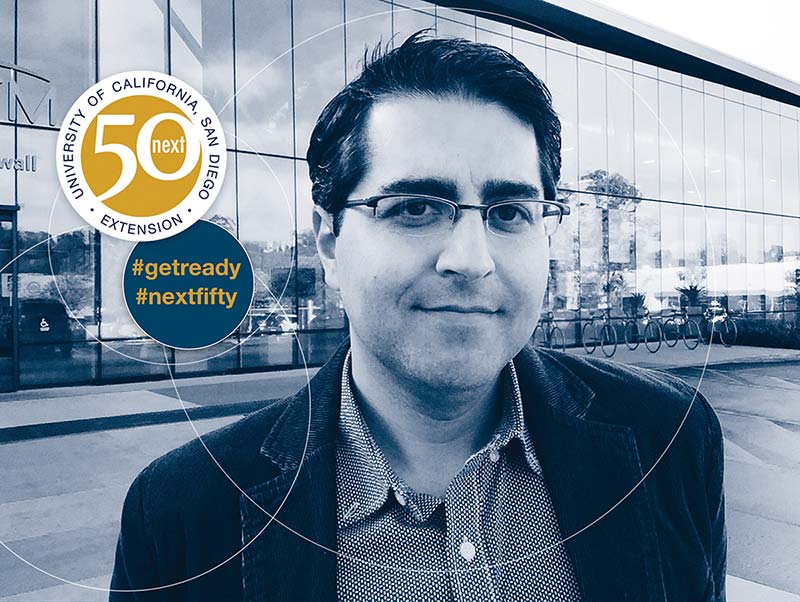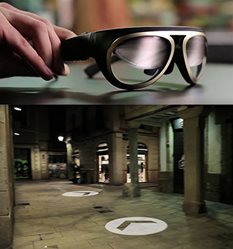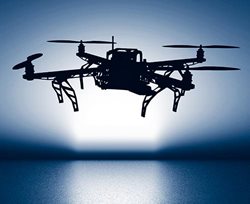26 January 2016
50 Voices of the Future: Babak Forutanpour on computer vision

In honor of UC San Diego Extension's first 50 years, 50 Voices of the Future asks thought leaders about the trends, breakthroughs and social advances they foresee over the next 50 years.
In the movie “2001: A Space Odyssey,” the plot pivots on the Hal 9000 computer’s ability to read the lips of two astronauts trying to speak privately in a space pod. Though Hal’s high level of artificial intelligence remains in the realm of science-fiction, the visual component of that scene — a computer “seeing” and interpreting what it sees — has fully arrived. Babak Forutanpour (Twitter: @babakf) specializes in the field of computer vision, which allows a program to capture, process and analyze images and then reliably make practical, actionable decisions about what it sees.
 As the Research and Development Systems Engineer for ecoATM (owned by Outerwall, makers of RedBox and Coinstar), Forutanpour designs and fine-tunes the eyes of robots grading smartphones and devices recycled by consumers at kiosks in malls and grocery stores across the United States. His team also uses computer vision in the kiosks’ face-recognition systems to verify customer identity.
As the Research and Development Systems Engineer for ecoATM (owned by Outerwall, makers of RedBox and Coinstar), Forutanpour designs and fine-tunes the eyes of robots grading smartphones and devices recycled by consumers at kiosks in malls and grocery stores across the United States. His team also uses computer vision in the kiosks’ face-recognition systems to verify customer identity.
Computer vision allows ecoATM kiosks to "see" the smartphones, mp3 players and tablets people supply in exchange for cash.
(1) Why is the work you do important?
The field of computer vision is rapidly becoming essential in many realms: aligning buildings during construction, detecting bombs, or allowing apps like CamFind to interpret user photographs. For me, it’s very satisfying using computer vision to reduce electronic waste by recycling cellphones at ecoATM. We buy back 10,000 phones a day, so even little improvements I make to the visual algorithm have a major impact on reducing waste.
Another example is the automotive-safety project I did at Qualcomm in partnership with BMW. We linked augmented-reality (AR) glasses to a field-of-view tracking system and exterior-mounted car cameras. This essentially gives drivers X-ray vision that eliminates all blind spots, an invention that — with future development — could reduce accidents and save lives.
(2) What are the influential/exciting developments in your field and why?
Computer vision has exploded in the last five years, especially paired with a field called machine learning, a forerunner of artificial intelligence. Principles of neural networks going back to the 1950s are now supercharged with low-cost, hardware-accelerated CPUs (central processing units) and GPUs (graphics processing units), then fueled by Internet-connected big-data sets. Today’s high-end opti-cores fit on silicon the size of your thumbnail but are more powerful than the buildings full of computers it took to put a man on the moon.
This amazing new paradigm allowed one of my teams at Qualcomm to use an algorithm so a drone could fly through interiors while creating a real-time 3-D map. By observing textures and features on the walls and carpets, the drone’s camera could measure speed and direction and “know” where it was at all times — not from accelerometers, gyroscopes or GPS, but based solely on what it saw.
(3) What’s the next big thing?
 Augmented-reality glasses, like these prototypes Forutanpour helped design for BMW and Qualcomm, display useful images on surfaces as the wearer moves.
Augmented-reality glasses, like these prototypes Forutanpour helped design for BMW and Qualcomm, display useful images on surfaces as the wearer moves.
I foresee most of us wearing augmented-reality (AR) glasses or head-mounted displays (HMDs) in daily life. When you go to work you’re not just going to be handed keys to the office or given a laptop, you’ll also be given AR glasses to make you more efficient and productive. The glasses will stick content to the blank walls around you, tracking your head’s movements and matching displays to your perspective.
One of my computer-vision teams designed and patented a watch with an electromyography band to measure muscular ion flow. Such a device would let you make subtle pinch-and-zoom gestures to interact with information displayed in your field of vision, dragging content and even sharing it with others wearing similar AR glasses. Additionally, your AR glasses would be equipped with face recognition and databases to recognize everybody around you.
AR glasses could also augment communication for a person whose brain was damaged by a stroke, and color-coded indicators could help autistic children identify facial cues to determine emotional states of people during interactions.
(4) How big of an impact will your field play in shaping the future of the San Diego region and beyond?
Three of San Diego’s biggest industries — medical firms, defense contractors and wireless companies — are already using computer vision and deep learning to revolutionize their areas. I’d particularly like to give a shout-out to a hot company called Nervana, which is creating accelerated, mobile device-sized, machine learning-dedicated hardware from the ground up.
(5) Hop into your time machine…what does the future look like for this field in 50 years? How can individuals/companies prepare?
 As beneficial as advancements in computer vision and machine learning have been, they could open a Pandora’s box of problems — especially when it comes to drones. Computer vision already aids a drone’s navigation and obstacle avoidance. I’m frightened people with low emotional intelligence could use the same technology to track and target people using algorithms to match facial patterns associated with racial or religious demographics. Or show a drone a picture of an ex-girlfriend’s new lover, say “go get him,” and the drone flies around searching and recharging itself until it finds that person. In a war scenario, a foreign country could release 40,000 weaponized drones, and good luck stopping them. We have to work for a future less like the “Terminator” movies and more like the lighthearted “Back to the Future II.”
As beneficial as advancements in computer vision and machine learning have been, they could open a Pandora’s box of problems — especially when it comes to drones. Computer vision already aids a drone’s navigation and obstacle avoidance. I’m frightened people with low emotional intelligence could use the same technology to track and target people using algorithms to match facial patterns associated with racial or religious demographics. Or show a drone a picture of an ex-girlfriend’s new lover, say “go get him,” and the drone flies around searching and recharging itself until it finds that person. In a war scenario, a foreign country could release 40,000 weaponized drones, and good luck stopping them. We have to work for a future less like the “Terminator” movies and more like the lighthearted “Back to the Future II.”
You can learn more about the programming and engineering concepts discussed by Babak Forutanpour by taking related courses and certificates at UC San Diego Extension. To better understand computer vision, see the details of our Wireless Engineering certificate, which includes this course. To better understand machine learning, see our Data Mining certificate.